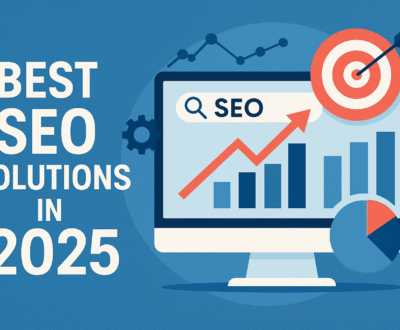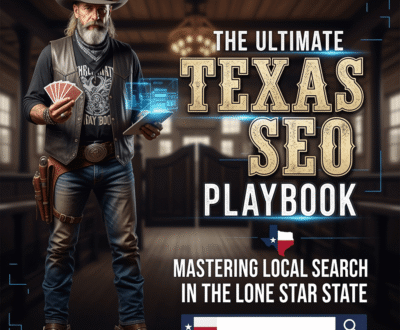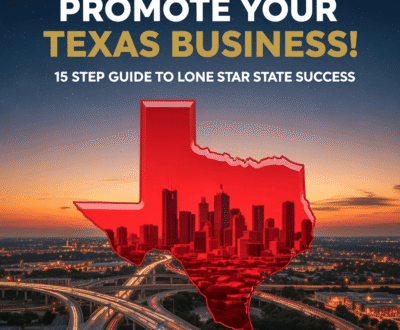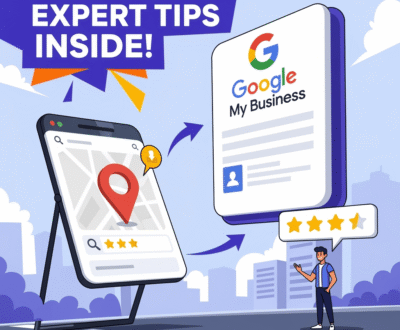🚀 Programmatic AI SEO for Service Areas: The Ultimate 2025 Playbook to Dominate Local Demand
🎯 Intent Unlocked: Why You Searched “programmatic AI SEO for service areas”
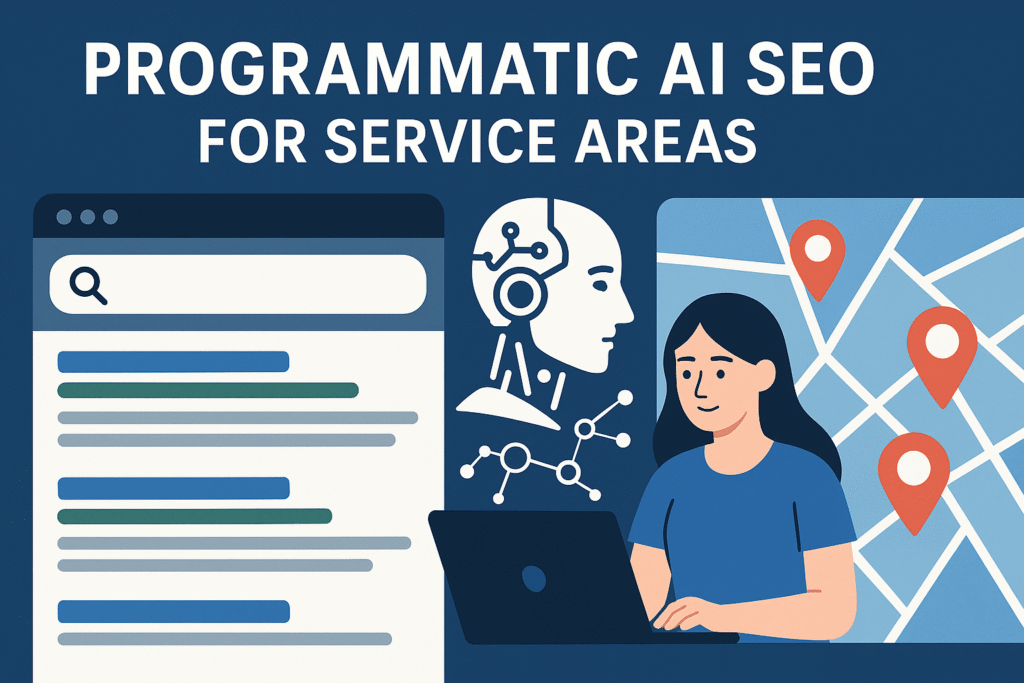
What This Playbook Covers. . .
Programmatic AI SEO for service areas isn’t a buzzword—it’s the fastest route for multi-location and service-area businesses to capture intent-rich searches at scale. You’re here because you want qualified leads from dozens or hundreds of suburbs, cities, and neighborhoods without manually writing a page for each. You’ve probably tried “location pages” before and hit a wall: thin content, cannibalization, duplicate templates, and diminishing returns. This playbook solves that—with data, AI, and a system that compounds.
📌 The primary search intent behind this topic is commercial investigation: decision-makers evaluating how to deploy programmatic AI SEO for service areas to increase qualified local traffic and bookings. Secondary intent is informational, seeking frameworks, workflows, and stack recommendations that de-risk execution in 2025.
👤 Reader avatar: Growth-focused marketing leaders at service businesses (home services, healthcare networks, legal practices, logistics, franchise systems), SEO managers at multi-territory brands, and founders running lean teams who need scalable, compliant, and ROI-positive local growth. You’re analytical yet impatient with fluff, comfortable with data, and allergic to low-quality AI content. You want a complete system—architecture, prompts, QA, schema, and measurement—for programmatic AI SEO for service areas that aligns with brand and converts.
🧭 Personality cues: You respond to clarity, proof, and playbooks. You prefer step-by-step frameworks and checklists. You value precise language, real-world examples, and safeguards that keep AI output on rails. You’re wary of risk—Google updates, duplicate content, and compliance across regulated categories.
🎯 Outcome: By the end, you’ll have a 90-day roadmap to launch or overhaul programmatic AI SEO for service areas, including entity modeling, content ops, internal linking, LocalBusiness schema, and service-area sitemaps.
💡 Pro Tip: Treat every service area like a micro-market with its own demand signals, competitors, and language. The more your AI system reflects those local nuances, the higher your win rate.
🧠 The Operating System: How Programmatic AI SEO for Service Areas Really Works
At its core, programmatic AI SEO for services and areas transforms structured data into thousands of unique, locally resonant pages—each optimized for a specific combination of service + geography + intent. Think of it like building a railway: data is the track, templates are the stations, and AI is the train delivering contextually perfect content on schedule.
🔑 The building blocks:
- 🧱 Data layer: Cities, neighborhoods, ZIP codes, service categories, sub-services, proof points (testimonials, photos), pricing bands, regulations, FAQs, and seasonal trends.
- 🧩 Template layer: Modular HTML blocks for intros, benefits, process, localized proof, CTAs, and FAQs that AI fills with precise, verified data.
- 🤖 AI layer: Prompt chains that enforce tone, structure, and on-brand terminology while inserting local signals and unique angles.
- 🔗 Linking layer: Programmatic internal linking that groups relevant service-area pages, hubs, and supporting content to distribute authority.
- 🗂️ Schema/sitemap layer: LocalBusiness and Service schema, plus XML sitemaps segmented by geography and service clusters for crawl efficiency.
🧪 The secret sauce is constraint. Programmatic AI SEO for service areas excels when you pair deterministic templates with curated data—then give AI a narrow but rich canvas. The result is pages that read handcrafted yet scale like software.
⚡ Execution flow: ingest data → enrich entities → generate drafts → validate with automated checks → human QA on outliers → publish in batches → measure and iterate. The higher your data quality, the lower your QA burden and the stronger your local differentiation.
⚠️ Important: Don’t let AI hallucinate local facts. Every local reference (permits, neighborhood names, traffic patterns) must come from verified datasets or first-party knowledge.
🗺️ Service-Area Architecture: From Hub-and-Spoke to Local Demand Networks
Programmatic AI SEO for service areas thrives on a durable information architecture. Move beyond flat “City + Service” pages to a layered model that mirrors how people search and how Google evaluates topical authority.
🧭 Build a multi-level hub system
Create national/state hubs → metro hubs → city pages → neighborhood/ZIP pages → service variants. Each layer supports the next with contextual internal links and schema. This reduces cannibalization, improves crawlability, and lets you deploy granular content where demand warrants it.
🏙️ Respect “Service-Area Business” nuances
If you serve customers at their location (HVAC, mobile vets, on-site IT), your programmatic AI SEO for service areas should reflect a service-area business model. Align content, schema, and Google Business Profile settings accordingly.
For official guidance on service-area business configuration, review Google’s service-area business guidelines.
🪜 Avoid cannibalization by clarifying roles
City pages should target broader, higher-volume intents (e.g., “roof repair in Denver”), while neighborhood pages capture hyperlocal modifiers (e.g., “Capitol Hill same-day roof leak fix”). Keep intents distinct, and reinforce topical signals with precise internal links.
🔍 Insight: Use search console regex filters by URL path (e.g., /denver/) to verify that queries align with each page’s intended scope. If overlap grows, tighten keyword focus or adjust internal links.
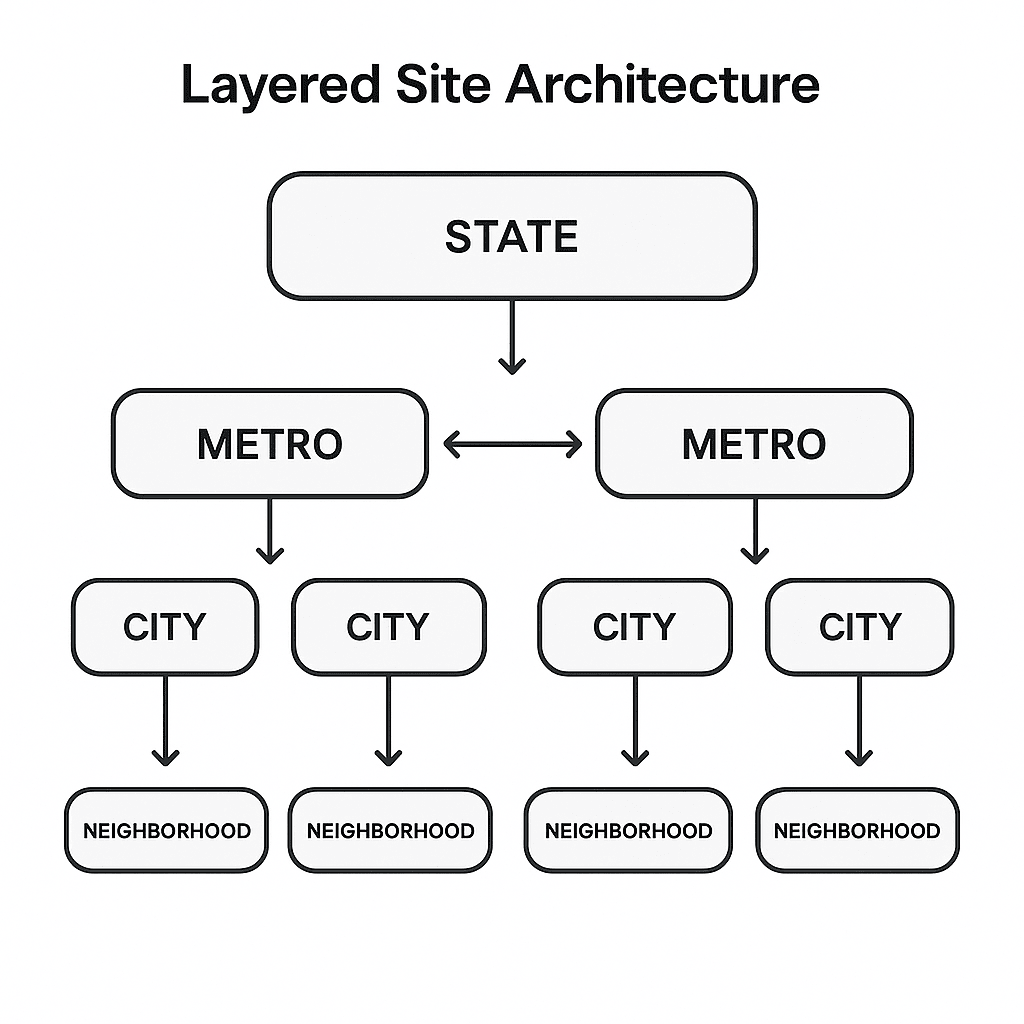
⚙️ Data Pipelines and Entity Modeling: Fuel for Local Relevance
Data is the bloodstream of programmatic AI SEO for service areas. Without robust entities and clean pipelines, you’ll ship sameness. With them, you’ll ship credibility at scale.
🧬 Define entities and attributes
Map entities for services, geographies, and proof assets. For each city, store neighborhoods, ZIPs, landmarks, climate factors, traffic patterns, seasonal issues, permit requirements, median home ages—whatever truly affects your service delivery. For each service, store sub-services, tools, average duration, risk factors, urgent triggers, and pre/post checklists.
🔗 Create relationships that AI can reason about
Link services to geographies: “water heater replacement” + “older housing stock ZIPs.” Link reviews to cities and service types. Link seasonal patterns (e.g., “freeze warnings”) to emergency services. In programmatic AI SEO for service areas, these relationships drive micro-angles that make pages feel locally expert.
- 🗃️ Source data: first-party CRM, job logs, review exports, GBP insights, census, weather APIs.
- 🧼 Hygiene: normalize names (NYC vs. New York City), dedupe ZIPs, validate geo coordinates.
- 🧲 Enrichment: add demand signals—query volumes, seasonality, SERP features, competitor density.
- 🔐 Governance: track provenance, version data snapshots, and audit transforms for compliance.
💎 Nugget: Label every testimonial and gallery image with service + city + month. These become gold-standard unique blocks when you generate localized proof sections.
✍️ Guardrailed Generation: Templates, Prompts, and Human QA
Programmatic AI SEO for service areas wins when AI writes inside smart constraints. Build modular templates and prompt chains that enforce tone, structure, and evidence insertion.
🧩 Template architecture
Use block-based templates: Hook intro → Local conditions → Service benefits → Process → Region-specific FAQs → Proof (reviews/photos) → CTA. Require each block to consume explicit variables (city, neighborhood, climate factor, typical house age, urgent triggers, proof asset).
📝 Prompt design that eliminates fluff
- 🎛️ Role prompts: “You are a [brand voice] technician writing for [city] homeowners…”
- 📎 Constraint prompts: “Use these verified facts only. Do not invent regulations.”
- 🧱 Format prompts: “Output HTML sections matching block IDs.”
- 🧪 Variation prompts: “Offer two micro-angles; select one aligned to [season] and [housing stock].”
🔍 QA workflow
Automate checks for duplication, fact conflicts, banned phrases, off-brand terms, and broken variables. Route edge cases to human editors. In programmatic AI SEO for service areas, expect 5–15% of pages to need manual polish; the rest should pass automated gates.
📋 Example: “Do not mention permit details unless [permits_required=true]. If no proof assets for [city], insert nearest neighboring city proof with a transparency line: ‘Recent work nearby in [neighbor_city].’”
🔗 Internal Linking, Schema, and Sitemaps That Scale
The difference between “indexed” and “dominant” is structure. Programmatic AI SEO for service areas requires link graphs, structured data, and sitemaps engineered for discoverability. Stay updated with the SEO Solutions Texas News!
🕸️ Internal linking patterns
- 🧭 Breadcrumbs: State → Metro → City → Neighborhood ensures context and crawl path.
- 🧲 Cluster links: City page links to top 4 service variants based on local demand.
- 🔁 Lateral links: Neighboring ZIP pages interlink where customer spillover is common.
- 🏛️ Hub linkbacks: Every leaf page links back to metro and service hubs for authority flow.
🧾 Schema essentials
Use LocalBusiness or appropriate subtype with Service markup and serviceArea coverage. Maintain consistent NAP on hubs; avoid creating fake addresses. For schema specifications that support programmatic AI SEO for service areas, see Google’s Local Business structured data docs.
🗺️ Sitemaps that help crawlers
Segment sitemaps by region or service cluster to keep files under 50k URLs and surface fresh areas quickly. Follow the canonical protocol defined at sitemaps.org.
| 🧭 Element | 🔍 Purpose | ⚡ Impact |
|---|---|---|
| Breadcrumbs | Hierarchy clarity | Better contextual relevance |
| Cluster links | Topical authority | Higher rankings in clusters |
| Sitemaps by region | Crawl efficiency | Faster discovery |
💬 Quote: “Structure dictates scale. When the architecture is right, content becomes inevitable.” – A seasoned technical SEO
📈 Measurement That Matters: KPIs, Diagnostics, and Iteration Loops
Programmatic AI SEO for service areas succeeds with disciplined measurement. Track acquisition quality at the city and service levels, not just sitewide.
📊 KPI stack by layer
- 🎯 Page-level: non-brand clicks, local-modifier impressions, conversion rate, call/chat starts, scroll depth.
- 🧭 Cluster-level: share of impressions vs. competitors, average position, cannibalization rate.
- ⚙️ System-level: generation pass rate, QA reject rate, time-to-index, sitemap coverage percentage.
| 📍 Region | 🔎 Non-Brand Clicks | 📞 Lead Rate | ⚠️ Cannibalization |
|---|---|---|---|
| Metro A | 2,450/mo | 9.8% | Low |
| Metro B | 1,680/mo | 7.2% | Med |
| Metro C | 3,120/mo | 10.5% | Low |
🔁 Iteration loops: Every 28 days, evaluate clusters with rising impressions but flat clicks—diagnose snippet mismatch, slow LCP, or irrelevant angles. For clusters with falling impressions, investigate indexing issues or internal link decay.
🤣 Joke: An SEO walks into a bar, pub, tavern, lounge, saloon… and orders one canonical drink.
🧪 Experiments and Edge Cases: Thin Content, Duplication, and Overlap
When scaling programmatic AI SEO for service areas, the edges bite. Avoid thinness, duplication, and intent overlap with deliberate experiments.
🧪 A/B at the block level
Test micro-angles within blocks: neighborhood hook vs. problem hook, emergency CTA vs. estimate CTA, before/after photos vs. ratings badge. Keep the rest constant to isolate effects. Watch SERP snippet changes and dwell time as early signals.
🧯 Duplicate detection
- 🧮 N-gram similarity: flag pages with >70% overlap at the sentence level.
- 🧪 Content signatures: hash blocks to catch template leaks and variable failures.
- 🚦 Cannibalization monitor: compare queries per URL; merge or demote losing pages.
Programmatic AI SEO for service areas often fails when pages differ only by city name. Fix it with local conditions, hyper-relevant proof, and neighborhood-specific FAQs drawn from your entity graph.
⚠️ Important: If your service has identical delivery across nearby towns, create a metro-level page and use city sections within it—don’t force low-value city pages.
🛠️ The Practical Stack: Tools That Make It Click
Your stack should minimize glue work. Programmatic AI SEO for service areas benefits from a data warehouse + transformation layer + generation engine + QA automation + CMS deployment.
🧱 Core components
- 🗄️ Data: Warehouse (BigQuery/Snowflake) + ETL/ELT (dbt) + enrichment (APIs, SERP data).
- 🤖 AI: Model access (GPT-class or local LLM), vector store for retrieval, prompt orchestration.
- 🧪 QA: Linting, duplicate detection, fact validators, link checkers.
- 📰 CMS: Headless CMS with versioning and API publishing.
- 📡 Monitoring: Search Console API, analytics, uptime, core web vitals.
🧰 Optional boosters
- 🖼️ Image automation: Programmatic alt text and captions tied to city+service.
- 🗣️ Voice-of-customer: LLMs summarizing call transcripts into localized FAQ blocks.
- 🧭 Geo-IP routing: Direct visitors to nearest relevant page without cloaking.
💡 Pro Tip: Store prompts and templates in Git, version them, and tie releases to performance snapshots. Treat your SEO like software.
🧩 NLP That Converts: Persuasion Patterns by Persona
Programmatic AI SEO for service areas isn’t only about ranking—it’s about resonance. Use NLP techniques to match buyer psychology at the city level.
🧠 Persona-aligned rhetoric
- ⏱️ Urgency-driven: prioritize speed, availability, and emergency fees clarity.
- 🛡️ Risk-averse: emphasize certifications, warranties, permits, and documented process steps.
- 💸 Value-focused: show seasonal promos, bundled services, and cost-of-delay framing.
- 🌱 Eco-minded: highlight energy efficiency, waste disposal compliance, and rebates.
🗣️ Language tactics
Use metaphor lightly but purposefully: “We’re the pit crew for [city] homes during storm season.” Mirror local vernacular: “rowhouse,” “garden level,” or “laneway.” Programmatic AI SEO for service areas should detect and adopt regional speech without stereotyping. LLMs can switch tone based on the persona detected from query patterns (e.g., “emergency,” “same-day,” “cheap,” “licensed”).
People don’t buy services; they buy relief from local pain points. Speak to the pain first, then the fix.
🛡️ Risk, Compliance, and Update Resilience in 2025
Scaling programmatic AI SEO for service areas means navigating algorithm updates, AI content scrutiny, and local business rules.
🧭 Content quality signals
Stay aligned with helpful content principles and demonstrate E-E-A-T via technician bios, certifications, and clear sourcing. For content philosophy in 2025, review Google’s helpful content guidelines.
🔐 Regulated categories
Law, healthcare, and finance require rigorous review. Keep a compliance log per template version. Block AI from generating claims; require human approvals for sensitive assertions. Programmatic AI SEO for service areas can still scale—just move slower and track everything.
🔍 Insight: Maintain a rollback plan: if an update hits, unpublish weak leaf pages first, then consolidate into stronger metro hubs without losing equity.
🚀 Your 90-Day Launch Plan for Scalable Local Wins
Here’s a focused rollout to deploy programmatic AI SEO for service areas without chaos.
📅 Days 1–30: Data and Architecture
- 1️⃣ 🗺️ Inventory services and service areas, score by demand and margin.
- 2️⃣ 🧬 Build entity models and relationships; clean and enrich data.
- 3️⃣ 🏗️ Design hub-and-spoke IA; define URL patterns and breadcrumb rules.
- 4️⃣ 🧱 Draft templates and prompts; set brand voice and constraints.
⚒️ Days 31–60: Generation and QA
- 1️⃣ 🤖 Generate pilot pages for one metro; run automated QA gates.
- 2️⃣ 🧪 A/B test block variants; finalize default winning combos.
- 3️⃣ 🔗 Implement internal links, schema, and segmented sitemaps.
- 4️⃣ 🧭 Submit sitemaps; monitor indexing and SERP snippets.
📈 Days 61–90: Scale and Optimize
- 1️⃣ 📦 Publish additional clusters weekly; maintain QA thresholds.
- 2️⃣ 📊 Review KPIs; tune prompts, blocks, and link graphs monthly.
- 3️⃣ 🧯 Consolidate or demote thin leaf pages; reinforce metro hubs.
- 4️⃣ 🧗 Add proof assets and city-specific FAQs continuously.
💡 Pro Tip: Launch in waves: start with 20–40 highest-value pages. It’s easier to fine-tune a small fleet than a navy.
🧭 From Map Pins to Market Share: What to Do Next
Programmatic AI SEO for service areas converts geography into an owned demand engine. You’ve seen how entities, templates, guardrailed prompts, internal linking, and schema interlock. You’ve got a measurement cadence and a 90-day plan. The final step is cultural: treat your local SEO as a product, not a project. Ship updates, track versions, and keep learning from the markets you serve.
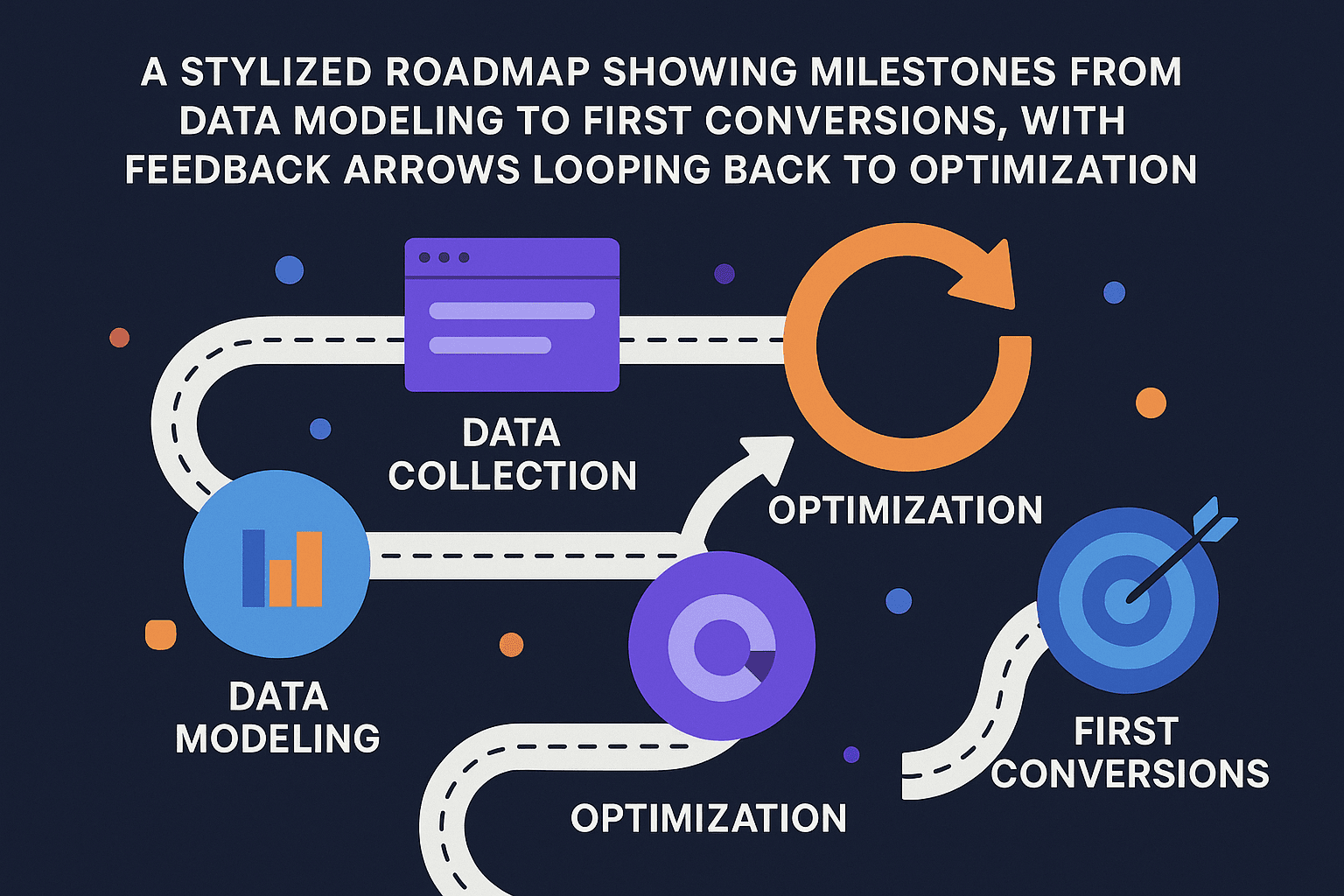
🔍 Insight: The winner in 2025 isn’t who generates the most pages—it’s who encodes the most truth about each service area into those pages.
❓ Expert FAQ on Programmatic AI SEO for Service Areas
Q1. What is programmatic AI SEO for service areas?
It’s a scalable method to generate high-quality, locally targeted pages using structured data, templates, and AI with strict guardrails. Each page targets a specific service plus geographic intent, reinforced by internal links, LocalBusiness schema, and segmented sitemaps. The approach reduces manual workload while increasing local relevance, conversion rates, and coverage across cities, neighborhoods, and ZIP codes.
Q2. How do I avoid duplicate or thin location pages?
Model local entities deeply—climate, housing stock, regulations, and real customer proof. Use modular templates that require localized variables. Enforce automated similarity checks and fact validators. Reserve neighborhood pages for areas with distinct demand or conditions. If value is minimal, consolidate into metro hubs and keep city sections instead of separate thin pages.
Q3. Which schema should I use for service-area businesses?
Use LocalBusiness or an appropriate subtype, add Service markup, and define serviceArea coverage. Maintain accurate NAP on hubs, avoid fake addresses, and align with Google Business Profile settings for service-area businesses. Include FAQs, reviews, and image objects where applicable. Validate schema regularly and keep it synchronized with page content and internal linking.
Q4. What KPIs matter most when scaling?
Track non-brand clicks with local modifiers, conversion rate to calls or bookings, indexation rate by cluster, average position per hub, and cannibalization (queries overlapping across similar URLs). Monitor system-level health: generation pass rates, QA reject rates, and time-to-index. Evaluate performance monthly at page, cluster, and system levels to guide iteration.
Q5. How do prompts and templates reduce AI risks?
Prompts impose role, constraints, and formatting rules; templates enforce structure and data use. Together, they limit hallucinations and maintain brand voice. Add automated QA for prohibited claims, data mismatches, and off-brand tone. This “rails-first” approach makes programmatic AI SEO for service areas reliable at scale and cuts human editing to outliers only.
Q6. What’s the best rollout plan for 90 days?
Phase 1: map entities and architecture, clean/enrich data, finalize templates. Phase 2: generate a metro pilot, deploy schema and segmented sitemaps, A/B blocks, fix QA gaps. Phase 3: scale weekly clusters, consolidate weak leaves, strengthen hubs, and continually add localized proof. Measure results and iterate monthly on prompts and link graphs.
Q7. Can this work in regulated industries?
Yes—move slower with stronger governance. Require human review for claims, maintain a compliance log per template version, and avoid medical/legal/financial advice language. Emphasize credentials, processes, and service disclaimers. Programmatic AI SEO for service areas still scales—just with tighter controls and more frequent audits of schema and content.
📚 DIGITAL MARKETING SOLUTIONS BLOG 🎉
We are a cutting-edge digital marketing and SEO agency dedicated to driving more website traffic and attracting new customers for our clients.
🔓 Unlock Your Free Business Analysis and Strategy
We provide professional SEO and digital marketing services that dramatically improve your visibility across search engines, social media, and key online networks—helping you rank higher, reach more potential customers, and grow your brand across the web.
🔖 Get Access To Our Secret Newsletter 🤐
Recent Posts
- 🚀 Programmatic AI SEO for Service Areas: The Ultimate 2025 Playbook to Dominate Local Demand September 30, 2025
- 🚀 Best SEO Solutions in 2025: The Ultimate Guide to Dominating Search September 15, 2025
- 12 Ways Digital Marketing Can Grow Your Business July 24, 2025


